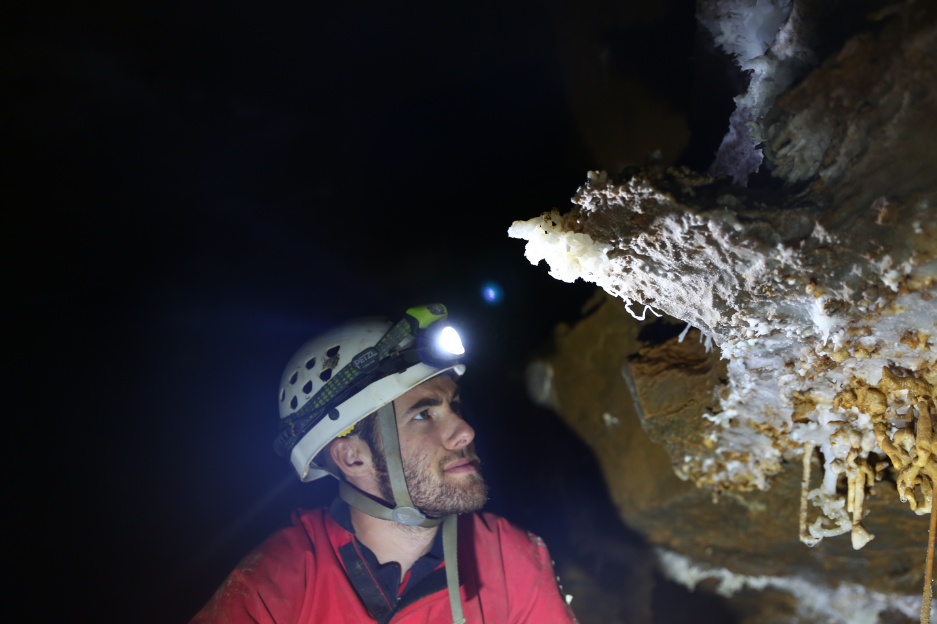If the index mark on your photo was at the center of the original image, the purplish blotch above and to the right of it is a ghosting of the bright light source the same distance to the lower left of it.
Ghosting is caused by the light from extremely bright sources (relative to the rest of the scene) reflecting off the front surface of a lens element or even the IR filter on the front of the imaging sensor and then bouncing back to the sensor from the rear surface of an element further forward in the optical path. The most likely culprit when using modern lenses with multi-coated elements designed for digital use is the back side of a screw on filter placed on the front element of the lens. Film was not as reflective as the front of a digital sensor assembly and lenses created during the film era often did not have anti-reflective coatings on the back of lens elements which can also lead to ghosting.
The more diffused glow in the lower left of the photo was probably caused by some form of localized moisture between the helmet light and the camera. It could have been patch of air supersaturated with moisture, similar to fog, or it might have been the lower left portion of the front element of your lens had a small spot of condensation on it.



